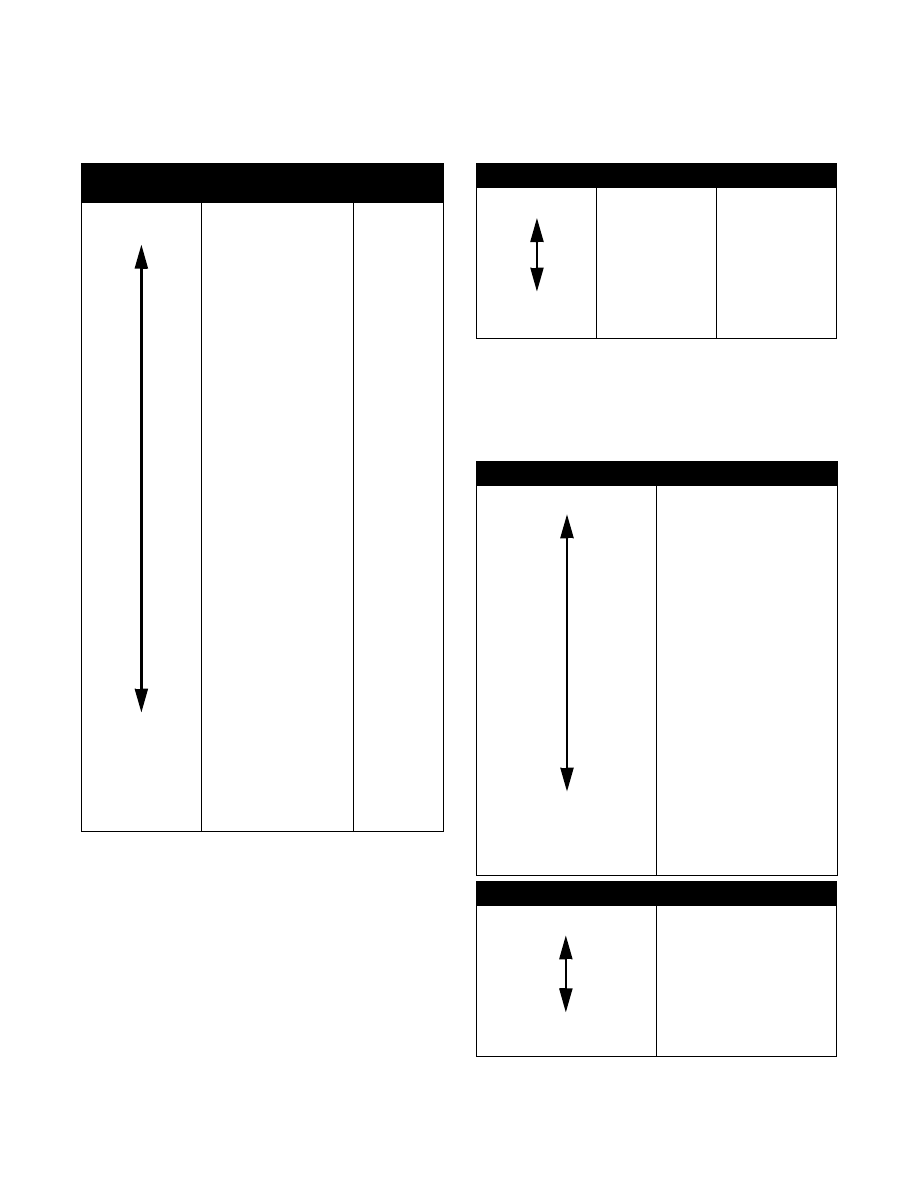Snowmobile Arctic Cat 2-Stroke (2007 year). Manual - part 61

4-18
Major Tuning Components
To assist you in selecting four major tuning components of the carburetor, listed below are the jet needles, needle
jets, pilot jets, and piston valves on charts according to their size.
NOTE: The above needle jets may come in dif-
ferent types; for example, (159) - (166) - (480) -
(224). When selecting a new needle jet, use the
correct series or type.
NOTE: The above chart shows the average per-
formance of a given needle between 1/4 and 3/4
throttle. Needles are constructed in such a way
that at any given point, the needle could be richer
or leaner than the rating it has.
NEEDLE JETS
TYPE - 159-166-480
VM30-32-34-38
TYPE 224
VM40-44
LEAN
N-4
N-6
N-8
O-0
O-2
O-4
O-5
O-6
O-7
O-8
P-0
P-2
P-4
P-5
P-6
P-8
Q-0
Z-0
Q-2
Z-5
Q-3
Z-6
Q-4
Z-8
Q-5
AA-0
Q-6
AA-1
Q-8
AA-2
R-0
AA-3
R-2
AA-5
R-4
AA-8
R-5
BB-0
R-6
BB-5
RICH
R-8
JET NEEDLES
LEAN
6DH2
7F7
6DH3
7DH2
6DH4
7F6
6DH7
7DH3
6DH8
7DH5
6DH41
7H2
RICH
6EGJ1
7J2
PILOT JETS
LEAN
12.5
15
17.5
20
22.5
25
27.5
30
32.5
35
37.5
40
45
50
55
60
65
RICH
70
PISTON VALVES
LEAN
4.0
3.5
3.0
2.5
2.0
1.5
RICH
1.0